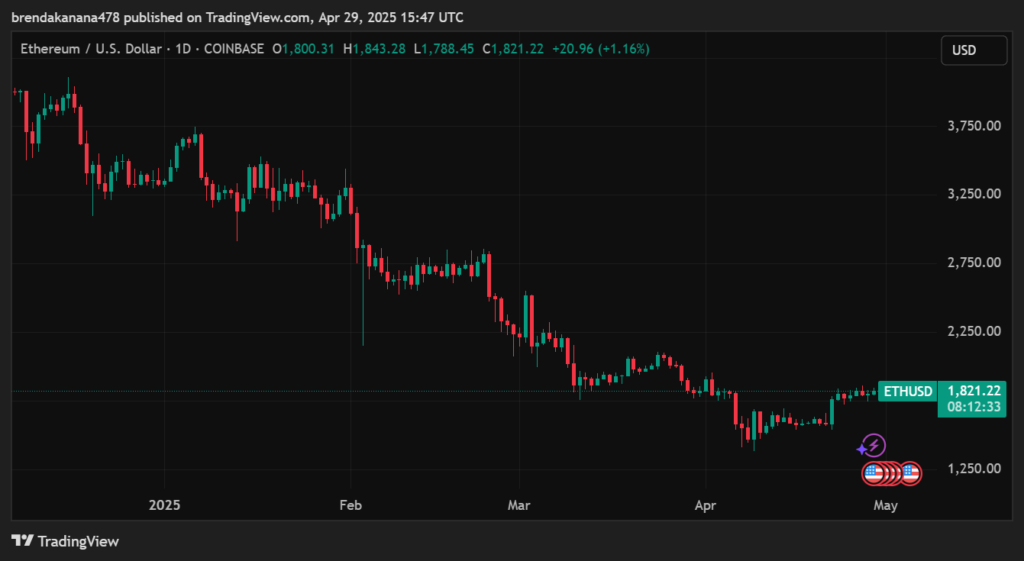- Active addresses on the Ethereum network grew 62.7% this week, reaching 15.4 million.
- Base, Unichain, and other Layer 2 platforms control over 70% of user activity.
- The decline in the price of Ethereum, below $2,000, did not affect the $2.5 billion level of its future open interest.
The Ethereum community set a new user record with 15.4 million active addresses that used the network last week. Research studies show that Ethereum network address activity rose 62.7% throughout the last week to achieve its current 15.4 million active addresses.
Layer 2 Networks Overtake Mainnet in User Activity
The growth reflects interactions across Ethereum’s core and Layer 2 networks, where expansion is more visible. Color-coded chart data shows that Layer 2 solutions are gaining dominance as their segments expand dramatically. Layer 2 dominance reached a record 6.65x, meaning activity on scaling layers far exceeds the base Ethereum network. The latest spike, marked in red, shows a historic blend of mainnet and scaling network interactions, suggesting a shift in user habits.
The swift rise in platform adoption belongs to Arbitrum, Optimism, Base, and Unichain platforms. The $253.8 million ETH institutional purchase by Fidelity brought additional market strength while continuing to drive price fluctuations. Ethereum exists at $1,821.58, while the previous trading price reached $1,805.44, representing a 0.89% climb throughout the last 24 hours.
Despite their relatively recent launches, Unichain and Base emerged as the biggest contributors to Layer 2 growth. Unichain alone commands 5.8 million active addresses, representing 39.26% of Ethereum ecosystem activity. The user base for Coinbase Base has reached 4.76 million, totaling 32.21% of Ethereum’s network activity. ETH Mainnet maintains the least active network addresses at 2.06 million, contributing 13.94% to total network use.
The current data shows a mass exodus from Ethereum’s main base of operations since users prefer more rapid and less expensive solutions. The growth in user demand is handled by Unichain and Base, which provide optimized decentralized application solutions through Layer 2 networks. Analysis through the chart indicates a major evolution in ecosystem user patterns by displaying this information through an illuminated red.
Ethereum Price Action and Resistance Levels
The ETH price is trading at $1,821, creating a near-convergent situation with the important resistance level at $1,945. Market analysts predict ETH will break through the $1945 resistance point to reach $2000 shortly after reaching $4500 in 2025.

Ethereum falls short in processing transactions as fast as some Solana-based networks, which continues to affect evaluation ratings. The basic foundation of Ethereum’s NFT and DeFi sectors maintains sustainable stability as an ecosystem. The continuous growth of institutional investment drives price stability while price targets approach essential support areas.
Ethereum Futures Market Shows Diverging Trends
Futures market movement within the Ethereum platform operates separately from the normal patterns experienced in spot market activities. The price movement of ETH, alongside its future trading open interest, remained consistent from early 2024 until the research period ended. The market reached its highest points through March 2024 because of speculative trading activity. The ETH price surpassing the $4,000 level triggered a significant increase in futures market open interest.
In April 2024, market conditions shifted. The decrease in the price of ETH coincided with falling open interest, which indicated that investors withdrew their funds from futures. Following those months, there were brief price increases that matched the rises in futures open interest during June and November. However, early 2025 introduced a divergence.
In addition, the downfall of the ETH spot price to below $2,000 did not affect open interest, which maintained a steady level of $2.5 billion. Futures market participants are demonstrating increased caution because of this trading pattern, which might also lead to an increase in short-sell positions. The futures market movement demonstrates that market participants expect elevated price fluctuations.














